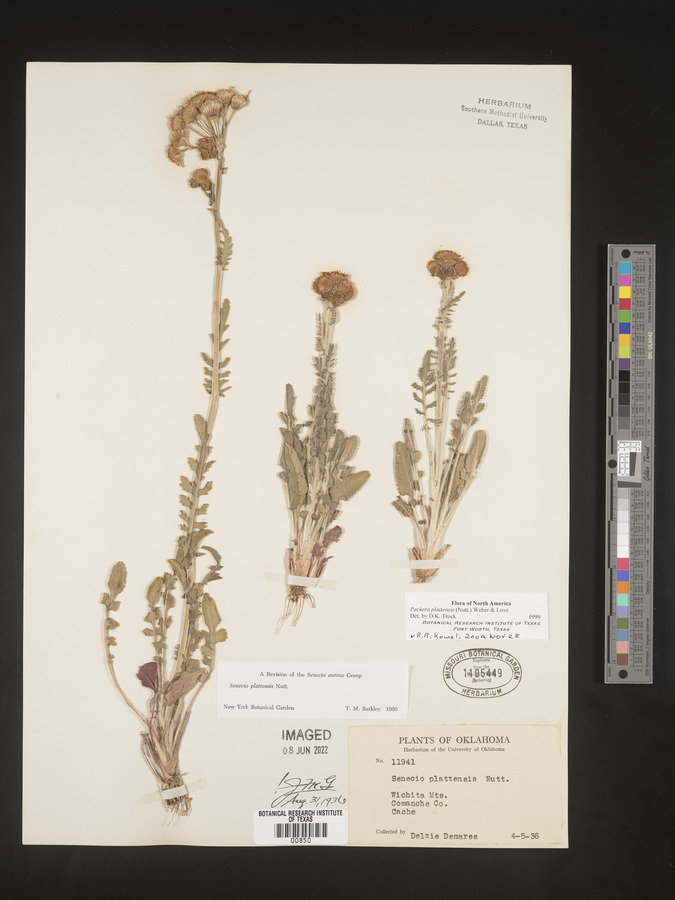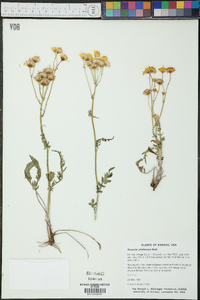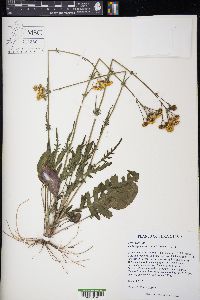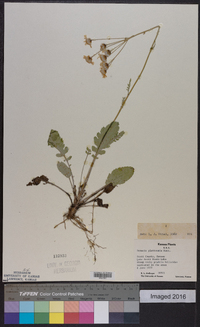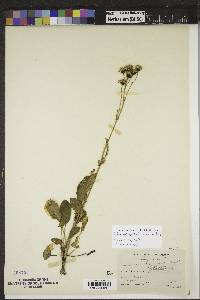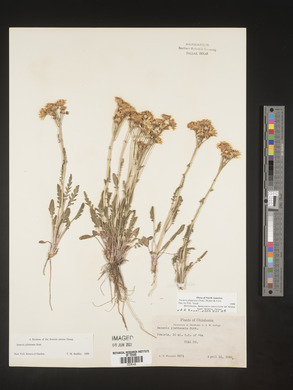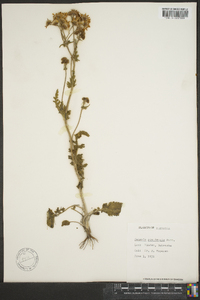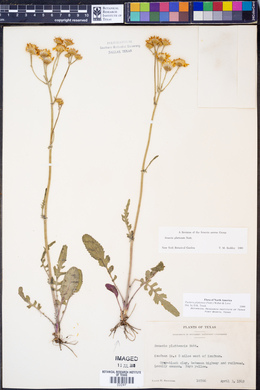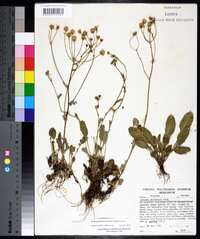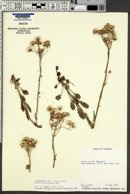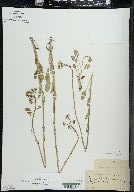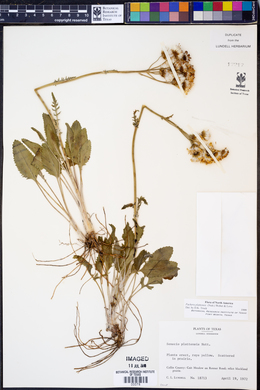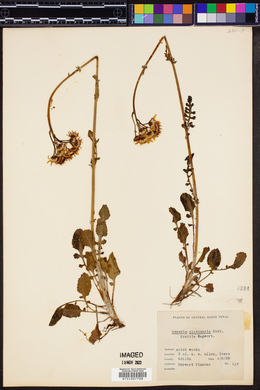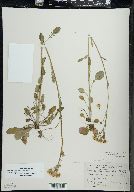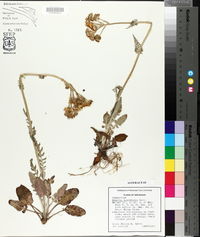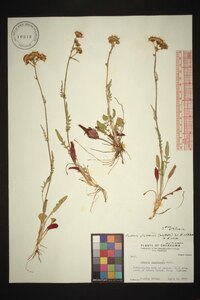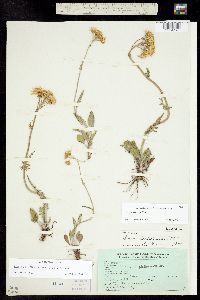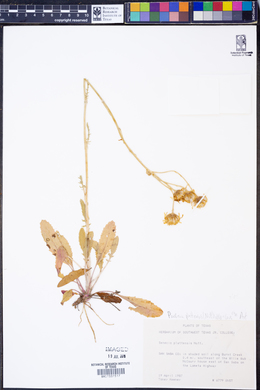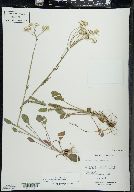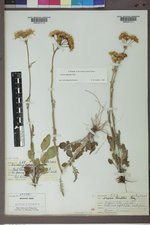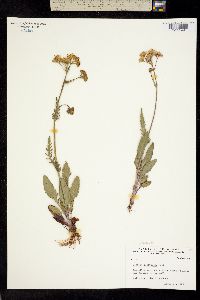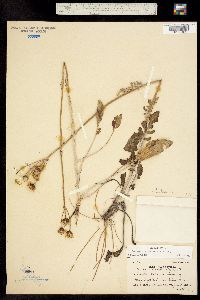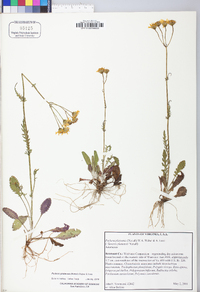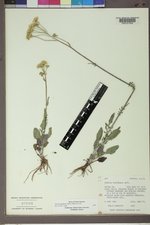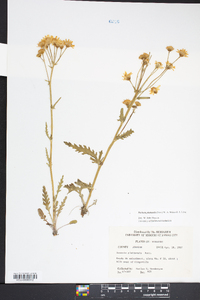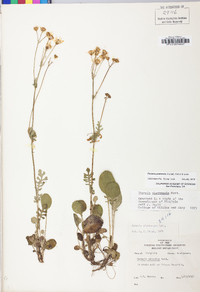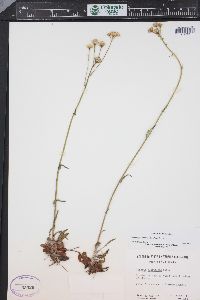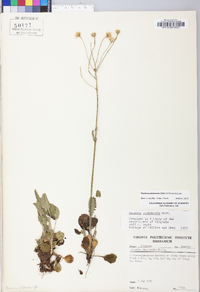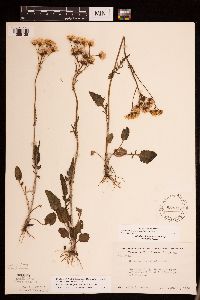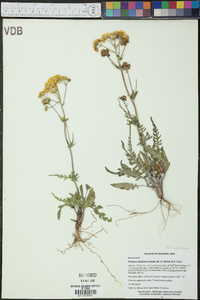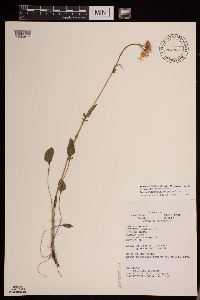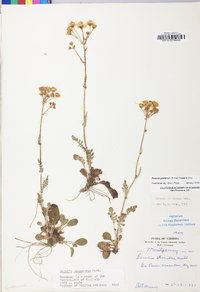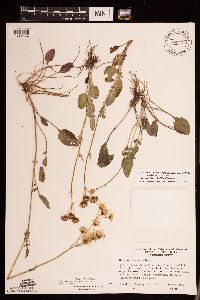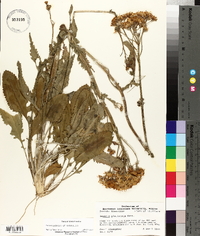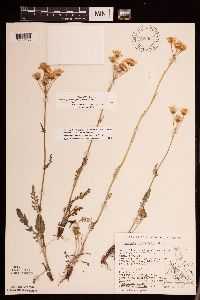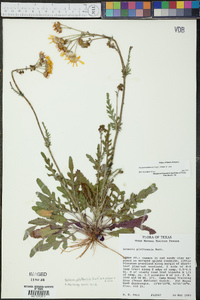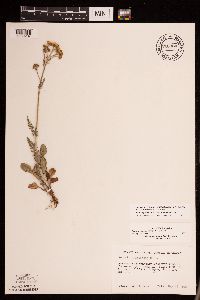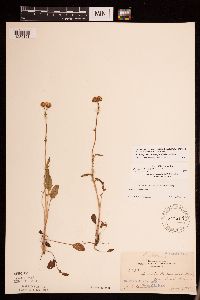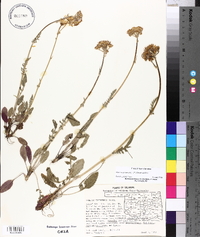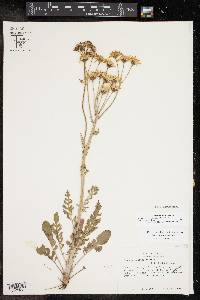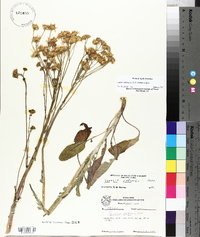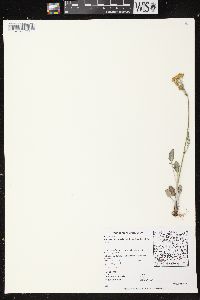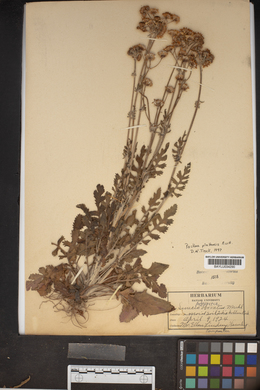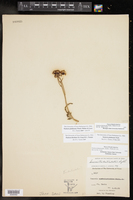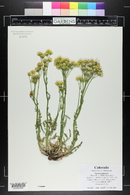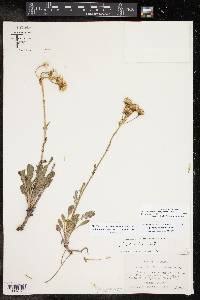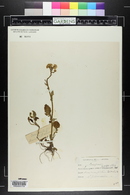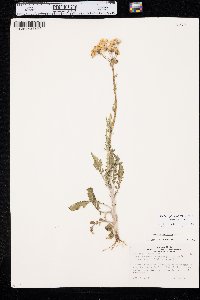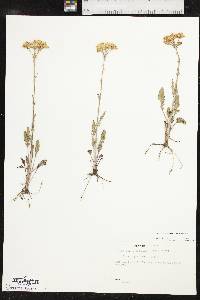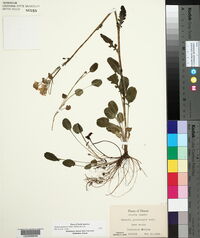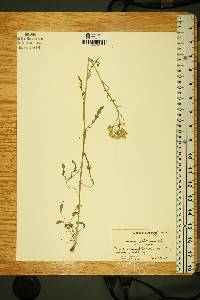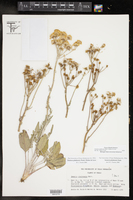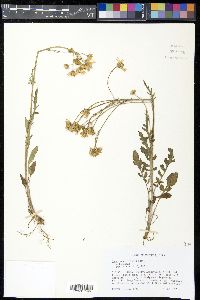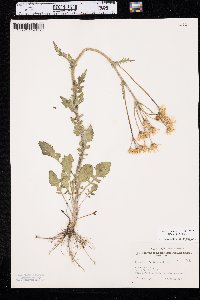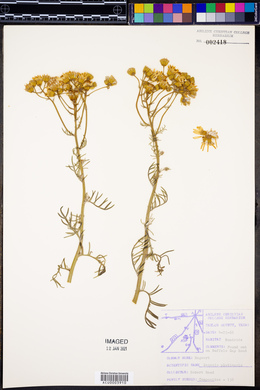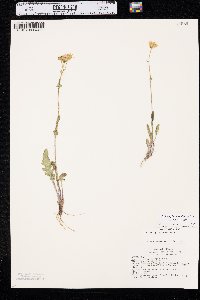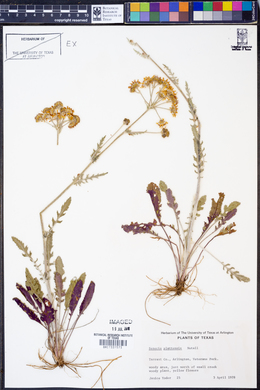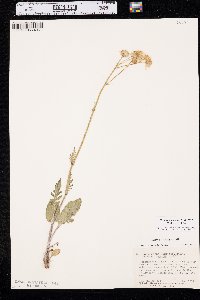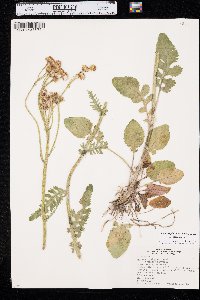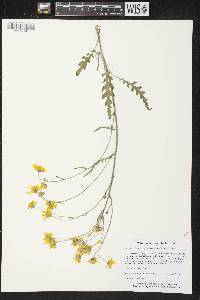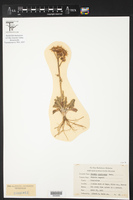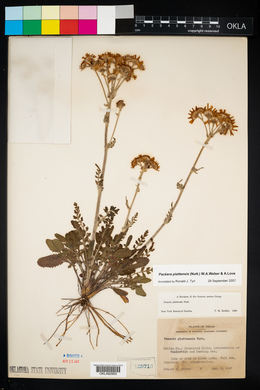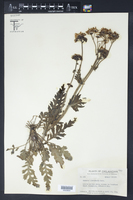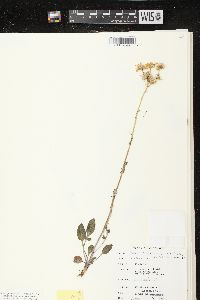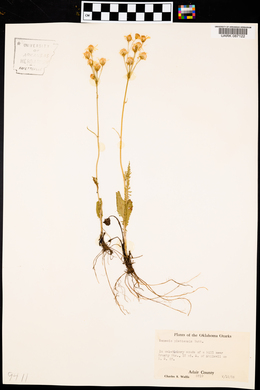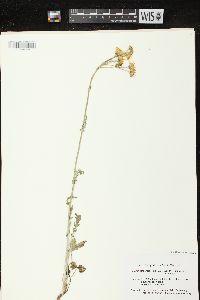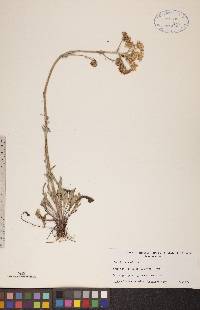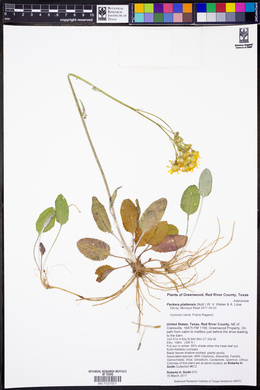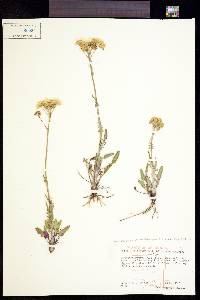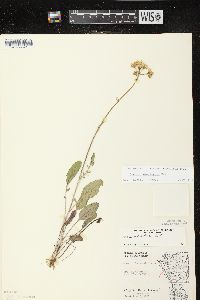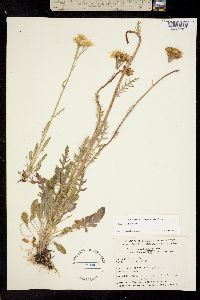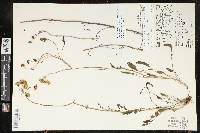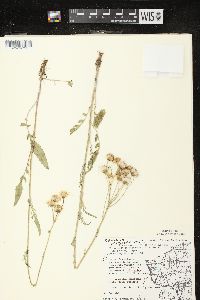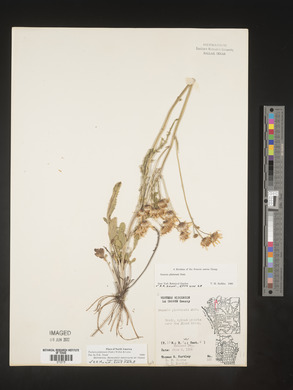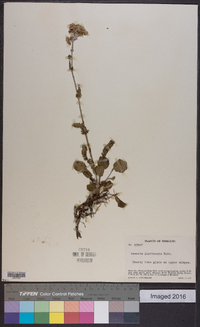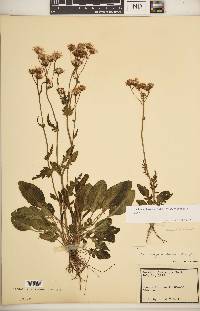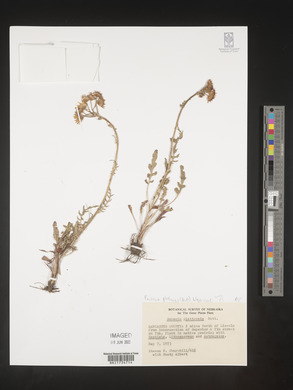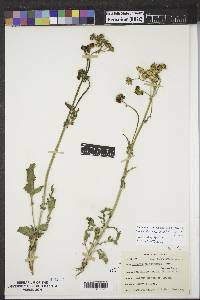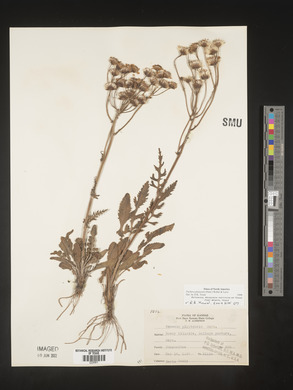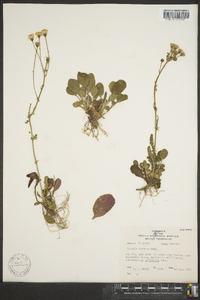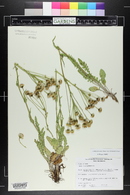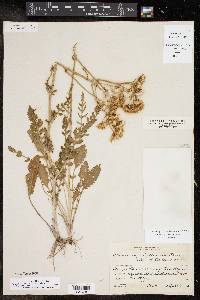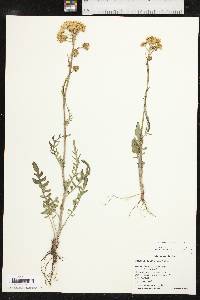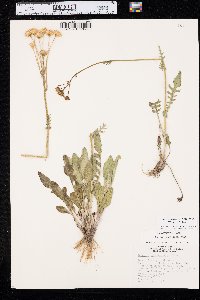
|
|
|
|
Family: Asteraceae
Prairie Groundsel
[Senecio plattensis Nutt., moreSenecio pseudotomentosus Mackenzie & Bush] |
Biennials or perennials, 20-60+ cm; rhizomatous and/or fibrous-rooted (bases erect to suberect), sometimes stoloniferous (mostly eastern populations). Stems 1 or 2-3, clustered, floccose-tomentose proximally and in leaf axils, otherwise sparsely tomentose or glabrescent. Basal leaves (and proximal cauline) petiolate; blades narrowly elliptic to elliptic-ovate or oblanceolate to suborbiculate or sublyrate, 20-70+ × 10-30+ mm, bases tapering to rounded or abruptly contracted, margins subentire to crenate, serrate-dentate, or pinnately lobed (abaxial faces floccose-tomentose, especially along midribs, ± glabrescent). Cauline leaves gradually reduced (petiolate, sublyrate or pinnatisect, abaxial faces sparsely hairy; distals sessile, subentire to irregularly dissected). Heads 6-20+ in open or congested, corymbiform arrays. Peduncles conspicuously bracteate, sparsely to densely tomentose. Calyculi inconspicuous. Phyllaries 13 or 21, green (tips sometimes cyanic), 5-6+ mm, densely tomentose proximally, glabrescent distally. Ray florets 8-10; corolla laminae 9-10 mm. Disc florets 60-70+; corolla tubes 2.5-3.5 mm, limbs 3.5-4.5 mm. Cypselae 1.5-2.5 mm, usually hirtellous, sometimes glabrous; pappi 6.5-7.5 mm. 2n = 46, 92. Flowering mid Apr-early Jun(-mid Jul, north). Prairies, meadows, open wooded areas, along highways, railroads, around mining and construction areas, usually on limestone; 50-1800 m; Ont., Sask.; Ark., Colo., Ga., Ill., Ind., Iowa, Kans., La., Mich., Minn., Miss., Mo., Mont., Nebr., N.Mex., N.Dak., Ohio, Okla., Pa., S.Dak., Tenn., Va., Wis., Wyo. Packera plattensis is abundant, widespread, and almost weedy. Putative hybrids with other species are known. Plants in mesic, remnant prairies in the east are sometimes stoloniferous.
Biennial or short-lived perennial 2-7 dm from a short caudex, sometimes also stoloniferous, ±persistently floccose-tomentose until flowering time or later, at least as to the stem, lower lf-surfaces, and invols; basal lvs narrowly or broadly elliptic or ovate to suborbicular or broadly oblanceolate, crenate-serrate or some deeply lobed, the blade and petiole to 10 נ3 cm; cauline lvs conspicuously reduced upwards, becoming sessile, ±pinnatifid; heads several or rather many, the disk 6-12 mm wide; invol 4-6 mm; achenes usually hirtellous; 2n=44, 46. Prairies and other dry, open places; Great Plains, and irregularly e. to s. O., Tenn., N.C., and Va., mostly inland from the coastal plain. May-July. Passes into nos. 6 [Senecio tomentosus Michx.] and 8 [Senecio pauperculus Michx.]. Gleason, Henry A. & Cronquist, Arthur J. 1991. Manual of vascular plants of northeastern United States and adjacent Canada. lxxv + 910 pp. ©The New York Botanical Garden. All rights reserved. Used by permission. From Flora of Indiana (1940) by Charles C. Deam This species is infrequent to rare in the area shown on the map. It is found in dry, sandy soil on open, black and white oak ridges, in moist soil between ridges, and in sandy prairie habitats. …… Indiana Coefficient of Conservatism: C = 5 Wetland Indicator Status: FACU |
This project was made possible in part by the Institute of Museum and Library Services [MG-70-19-0057-19].
Powered by Symbiota

